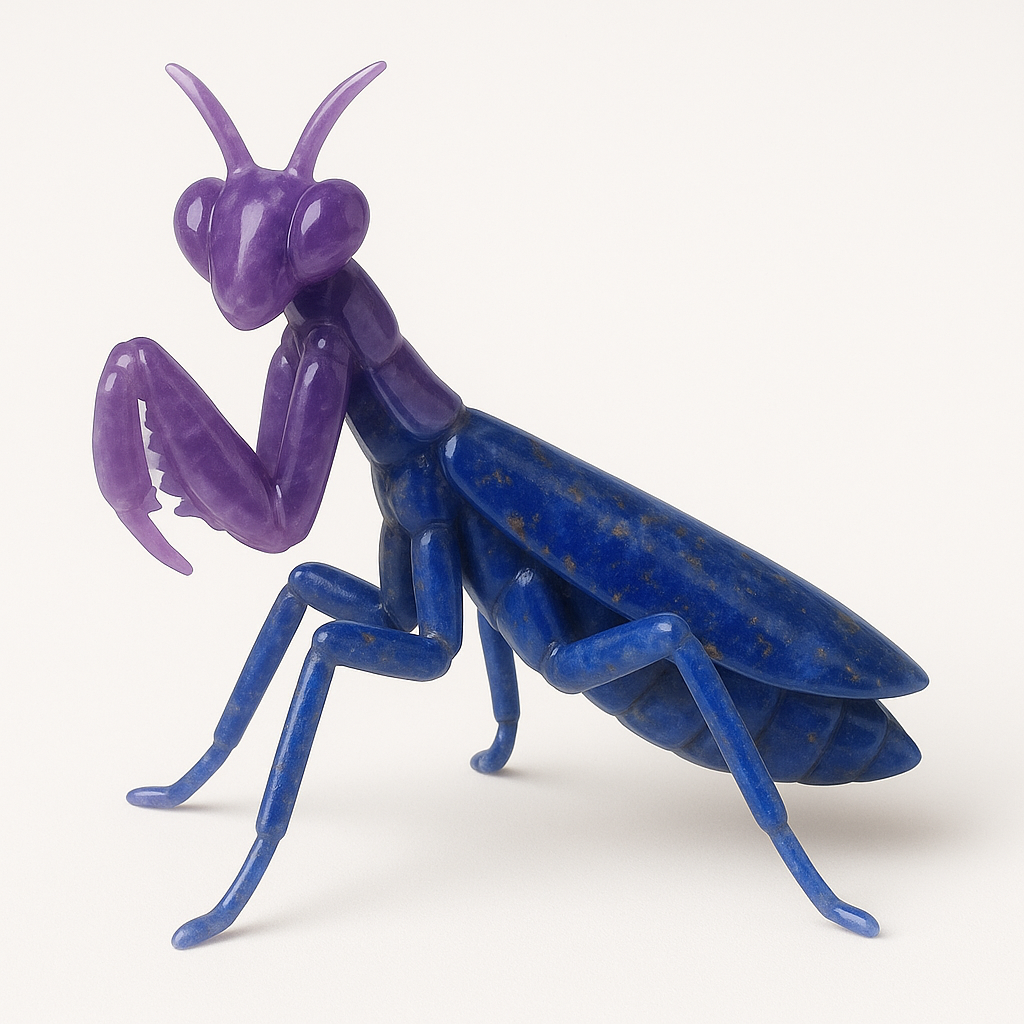
The Symbolism of Praying Mantises
Share
In the stillness between moments, when sound falls away and breath holds itself in the balance, there may be seen—almost imperceptibly—the form of the praying mantis. It does not chase. It does not flee. It waits. A creature of profound stillness and precise motion, the mantis stands as a symbol not of raw instinct or social harmony, but of attuned awareness, calculated intent, and a presence that transcends the visible world.
To contemplate the praying mantis is to draw close to the quiet edge of consciousness, where action and inaction are not opposites, but phases of the same energy. It is a being that has long carried the archetypal vibration of disciplined focus, of inner sight, and of a patience so deep it borders on the timeless.
The Silent Seer Across Cultures
Though less prominent in myth than lion, eagle, or serpent, the praying mantis has nevertheless stirred quiet reverence in those cultures attuned to its presence. In parts of Africa, it has been viewed as a harbinger of spiritual messages, a bringer of omens from the unseen. The Bushmen of the Kalahari considered the mantis a sacred being—an emissary from the spirit world, often embodying a form of divine intelligence.
In East Asian thought, particularly in martial philosophy, the mantis became a model for focused, economical motion. Styles of combat mimicking its strikes emphasized precision over force, centered posture over aggression. Here, the mantis is not just a creature, but a teaching—on how to move only when movement is aligned, and how to wait not passively, but with readiness rooted in discipline.
Throughout these cultural threads, the praying mantis is not loud, but it is noticed. It arrives when the mind slows enough to see it.
Behavior as Embodied Stillness
In observing the mantis, one encounters a creature of paradox: slow and swift, gentle and lethal, still and utterly alert. It moves only when the moment is correct, and when it does, the motion is sudden, efficient, and exacting. Nothing is wasted.
Its forelegs—raised in a posture resembling reverence—are in truth instruments of capture, yet they do not reach without certainty. This juxtaposition of apparent humility and latent power gives the mantis a spiritual charge. It does not attack in frenzy, but strikes with unwavering clarity, as though responding to an inner signal rather than external provocation.
The mantis teaches through example that power need not roar, that wisdom often looks like waiting, and that true action begins in stillness. Its life is one of deliberate engagement with the world—never reacting, only responding.
Resonance with the Energy Centers
The praying mantis exhibits a primary alignment with the indigo-ray energy center—the third eye chakra. This is the seat of inner sight, spiritual discipline, and focused consciousness. The mantis, in posture and in behavior, reflects these qualities with near-perfect precision. It does not operate from instinctual red-ray urgency or from the emotional waves of orange and yellow; instead, it acts from a space of clear alignment with its purpose.
The indigo-ray vibration is not impulsive. It does not seek attention or expression for its own sake. It sees—and through that seeing, knows when and how to move. The mantis exemplifies this state of attunement. It lives in a posture of poised receptivity, embodying the very principles of disciplined awareness that open the gateway to spiritual vision.
There may be a subtle secondary resonance with the blue-ray energy center—the throat chakra—particularly in its symbolic role as a communicator of spiritual messages in some traditions. However, this is not vocal or expressive communication. It is non-verbal transmission, the kind of message one receives through synchronicity, posture, or presence. In this, the mantis becomes a symbol of the message unspoken, yet deeply understood.
The Architect of the Moment
To attune to the praying mantis is to move away from haste, from noise, from the need to act. It teaches that stillness is not inaction, but the highest form of readiness. It is a living example of energy that waits until the field is correct, and then enters the field without hesitation or distortion.
The mantis is not domesticated, not emotionally expressive, and not bound by social constructs. It is a solitary mystic of the insect realm—unconcerned with popularity or affection. It exists for alignment, for precision, for the clarity that comes when motion is not dictated by desire, but by insight.
It does not rush. It does not explain. It simply becomes one with the moment that has arrived.
In the praying mantis, the seeker may find a symbol of the indigo-ray path—a being of spiritual discipline, inner listening, and unshakable presence.
The strike is not the lesson.
The stillness before it is.